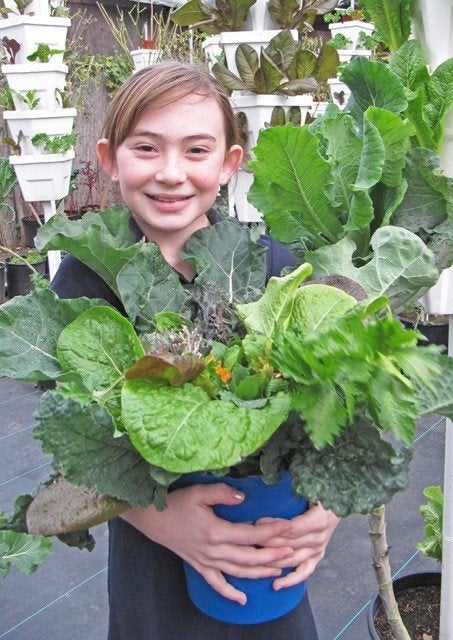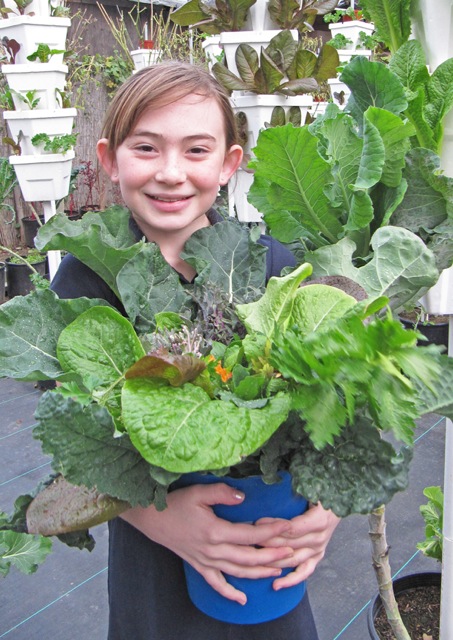
 People used to smile -- or even snicker -- when they saw our daughter, Chloe, eat halibut and avocado at age 3. At the airport snack bar, strangers would stare when she bypassed a counter full of sugary treats and high-fat foods kids are supposed to crave and reached for a serving of bell peppers and hummus.
People used to smile -- or even snicker -- when they saw our daughter, Chloe, eat halibut and avocado at age 3. At the airport snack bar, strangers would stare when she bypassed a counter full of sugary treats and high-fat foods kids are supposed to crave and reached for a serving of bell peppers and hummus.
Often, parents would ask us how we managed to get a strong-willed child to eat the foods that were best for her body and brain, instead of such supposed kid favorites as pizza, Pop-Tarts and juice.
The answer is simple: We don't keep junk food in our house and we've taught Chloe, now 9, to make healthy decisions for herself by helping her understand how various foods would affect her body and how she'd feel after eating them.
As a result, she's a lot smarter about healthy eating than I was at her age, or even at 20. For example, when I volunteered at her school on Halloween, I was asked to help the students decorate cookies -- with icing! Most of the kids were trying to grab as many cookies as they could. But Chloe refused to take even one of the sweet treats -- even when the teacher told her three times to help herself.
"I don't want a cookie right now," she insisted, adding that eating sugary food on an empty stomach might give her a bellyache. I was overjoyed to see my little girl listen to her body -- and refuse to give in to "group think" or an authority figure when told to eat something she knew wasn't good for her.
Here are seven easy, effective -- and often enjoyable -- ways to encourage your kids to make healthy food choices, without mealtime battles:
•Avoid being the food police. Forcing kids to eat foods they hate is a recipe for rebellion, resentment and frustration. Instead, only stock your pantry and fridge with a variety of tasty, wholesome options -- and ditch the junk. That way, every dietary choice your child makes in your home will be a good one.
•Introduce healthy new dishes each week, while continuing to serve one or two familiar foods. The goal is to quickly eliminate the worst foods your kids currently eat, followed by less-than-ideal options, as you replace them with wholesome choices, such as soup, salad, fruit, and homemade desserts made with healthy ingredients. Keep in mind that kids often need to try a new food several times before deciding they like it. As my friend JJ Virgin says, "Exposure equals preference."
•Entice your kids to love veggies. Try this stealthy strategy: Add greens to a fruit smoothie for a nutrition boost. Or consider making cauliflower mashed potatoes, adding small amounts of a new vegetable to one that your child already likes, or using raw almond butter on celery sticks and red bell peppers. Also let kids have fun helping you cook meals or arrange foods on a plate. For younger kids, veggies may taste better when shaped into a smiley face, while older children may take pride in cooking greens they like, then being creative with spices or garnishes. Adding a little vanilla, cinnamon or raw cacao often goes a long way in getting kids interested in otherwise bland food.
•Play with your food. Make learning about nutrition enjoyable by turning it into a game. In our house, a family favorite is, "This Is Good for My Brain, This is Bad for My Brain." We name different foods and Chloe gives a "thumbs up" or "thumbs down." For particularly healthy foods, such as blueberries (which we call "God's candy"), she gives two thumbs up and always asks if they are organic, while items like ice cream and soda get two thumbs down. Fresh orange juice gets one thumb down (for sugar), so we make a smoothie instead, using the whole orange.
•Let kids choose their own "parent-approved" snacks. Another easy way to help kids make great food decisions, even at a young age, to have a "snack shelf" of nutritious foods they can reach themselves. By encouraging your kids to make their own decisions about what to eat (from an assortment of healthy options), they start learning to take responsibility for their nutrition.
•Allow kids to make dietary mistakes -- and learn from them. Since you don't want to be the food police, avoid scolding your kids about poor dietary choices. Instead, look for opportunities to help them learn from the consequences. For example, you might point out that the gooey birthday cake your son or daughter ate a friend's party could be what caused the tummy ache or nausea that struck afterward.
•One of the best ways to help your kids form a healthy relationship with food is by teaching them to connect what they eat with how they feel. If your kids eat something nutritious, ask them how they feel. Suggest names for these feelings, such as "energized" or "happy." Or if they eat sugar, point out if they "are more hyper" or when they "get a time-out more often." One message that we've given Chloe is that food is a fuel for the body -- and hers works best when it's given top-quality fuel.
For more ideas on healthy eating, plus delicious, wholesome recipes, please visit my website. While you're there, make sure to sign up for my newsletter by clicking on the link in the upper right hand corner, and I'll send you tips every week that will support your new healthy lifestyle.
For more by Tana Amen, click here.
For more on diet and nutrition, click here.